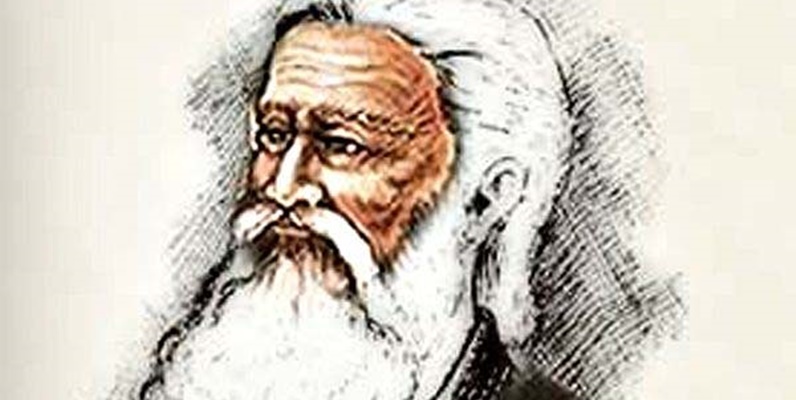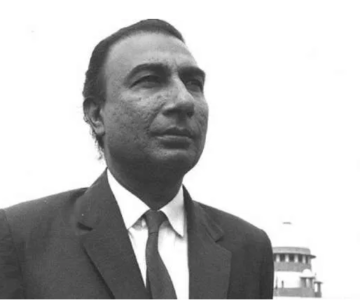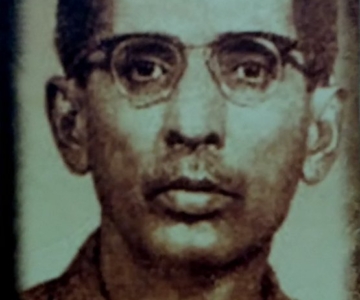Another readable piece by Dr Sher Zaman Taizi
This poem in ghazal form is very simple and direct. It starts with a direct address to God and gradually moves on to ethical values, human needs and human nature. I will try to transliterate the original Pushto verses into English with the hope that readers will be able to appreciate its meaning.
Not for a single moment, am I indifferent to You!
Not indifferent to Your invocation and reflection!
Whatever shrine I go to, I have You in mind!
I am not interested in any pilgrimage to mosque or temple!
(The word zaer means ‘visitor or pilgrim’. Here Rahman Baba draws a line between customary and leisurely visits to shrines and the very sense of worship; makes it clear that the only being worthy of worship is God only and not the saint or any other object; and God is omnipresent – be it in a church, a synagogue, a pagoda or a mosque.)
I like the black dust of Your court.
I’m not pleased with the sight of Paradise without You!
Since I have been aware of (blessed with) Your vision.
I have no wish to enjoy looking at the world.
(Here, Rahman Baba professes to have the vision of God – the ultimate aim of a Sufi.)
Sans Your graceful face, no other face, I seek – even to equal the eye of a needle.
(The simile of ‘eye of a needle’
denotes ‘the slightest’ wish).
There may be many lovers of Your graceful face,
I top them all – and am second to none.
Say then (blame me), if I did not
offer my life for You!
That I’m either a devil or an animal – not a
human being.
My heart is injured by (feels sweet pain due to) Your glance.
I may not be blamed with healthy hands and feet.Set featured image
(Ghaza O’shwa is an idiom. It means the ‘end of the holy war’ – a religious accomplishment. Here, it puts stress on the speech. It is made clear that “I feel the pain in heart and not on the body”. This signifies the degree of absorption.)
My stature is upright like alif and straightforward.
Not made for violence like an arrow.
(Qaamat means stature, body. In these lines, Rahman Baba touches upon the moral values of humanity – preaching to be upright like alif and not to become an arrow to spread violence. Alif and arrow are both straight in shape but different in action.
These metaphors denote the difference between knowledge and ignorance, good and bad. The point for consideration is the ‘shape and action’. Straight in shape that is good looks, and straightforwardness that is honesty and sincerity are different values. Ethical perfection can be attained by the combination of positive aspects as denoted by alif – enlightenment and straightforwardness – and not of the negative as denoted by arrow – straight but harmful.)
I bow as the curl of hair, the pulpit of eyebrows I don’t curl like the snake or the scorpion
(Here Rahman Baba again presents the difference between similar bodily gestures – bowing or curling. One form is as lovely as the hair of the beloved and as pious as the pulpit (curved as the eyebrows of the beloved), and the other is as poisonous as of the snake or the scorpion.)
If something (wrong) happens to take place by my hand, (After all),
I’m a man with a belly (worldly needs) and not without a belly.
(An excellent reflection of the real sense of human needs and human nature)
I, Rahman, weep due to separation,
It’s a difficult phenomenon, I may not be blamed!
Most of the poems of Rahman Baba are in ghazal form. Previously, Arab and Persian poets wrote Qaseedas (long panegyric poems) in praise of kings, rulers and lords to extract some benefits. The qaseeda was divided into three parts, the first being an introduction to offer a background to highlight the object in the second part and then the wish of the poet in the third part. Khushal Khan Khattak has written some excellent qaseedas on events and not on persons.
Gradually the trend declined. The first part of it changed into ghazal. It has been defined by critics in various ways. Some call it ‘a talk with women’ while some describe it as ‘the pathetic cry of a deer when it has been shot by an arrow’ (Ghazaal means deer).
The ghazal should have at least seven couplets including an opening and closing. The opening couplet should be rhymed and then the same metre and rhyme run through the whole poem.
The poet adjusts his name or pen name in the closing couplet. It is normally considered a love poem and lyrical with romantic ideas expressed with profuse usage of figures of speech. Progressive, nationalist and freedom-loving poets changed the trend by accommodating their political and social ideas in the ghazal.
Since the fleeting effect of mysticism could not be expressed in long poems, poets took shortcuts to express their ideas with the help of figures of speech.
Persian poets invented forms of Rubayee (four-line poem, the first two being rhymed) or Qita (any number of couplets without rhymed opening) for mystic expression. Most Pushto poets, from Arzani to Amir Hamza Khan Shinwari, expressed their mystic ideas in ghazal form. Rahman Baba had mastered the art of expressing scholastic ideas in the simplest language.



